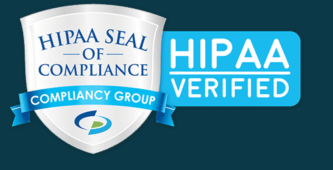Ensuring a Healthy Entity

When it comes to maintaining your business's legal status, being open, active, and in good standing with state records is paramount. State records serve as a vital source of information about your entity and its compliance with various legal requirements. In this blog post, we'll explore the significance of keeping your entity in good standing, along with practical steps to ensure its ongoing success.
What Does "Open, Active, and in Good Standing" Mean?
Being "open, active, and in good standing" refers to the legal status of your entity, as recognized by the state in which it is registered. This status indicates that your entity has met all necessary obligations, such as timely filings, payments, and compliance with state laws. Here's why maintaining this status is crucial:
Legal Compliance and Protection:
Being in good standing ensures that your entity complies with state laws, regulations, and reporting requirements. This compliance protects your entity's legal rights, preserves its liability protection, and maintains its ability to conduct business within the state.
Business Continuity:
Maintaining good standing is essential for uninterrupted business operations. It allows you to continue serving customers, entering into contracts, and accessing various business resources. Falling out of good standing can lead to penalties, loss of privileges, or even dissolution of your entity.
Credibility and Reputation:
Being in good standing with state records enhances your entity's credibility and reputation. It demonstrates your commitment to legal and ethical business practices, making it more appealing to customers, investors, and partners.
Steps to Ensure Your Entity's Good Standing:
Understand State Requirements:
Familiarize yourself with the specific requirements of the state where your entity is registered. Each state has its own regulations regarding filings, reporting, taxes, and compliance. Visit the state's official website or consult with a legal professional to ensure you're aware of all obligations.
File Required Reports:
Most states require entities to file annual reports or similar documents. These reports provide updated information about your entity, such as its address, officers, and sometimes financial statements. Ensure that you file these reports accurately and within the specified timeframe.
Fulfill Tax Obligations:
Pay all taxes and fees owed to the state, including income taxes, sales taxes, franchise taxes, and any other applicable taxes. Keep track of deadlines and make timely payments to avoid penalties or potential repercussions on your entity's good standing.
Maintain Registered Agent Services:
Appoint and maintain a registered agent in the state of registration. A registered agent acts as a point of contact for legal and official documents on behalf of your entity. Keep their contact information up to date, as failure to receive important notifications can negatively impact your entity's standing.
Update Entity Information:
Notify the state promptly of any changes in your entity's information, such as address, officers, or ownership. Failing to update this information can lead to inaccurate records and potential compliance issues. Follow the state's procedures for updating entity details.
Comply with State Laws:
Adhere to all relevant state laws, regulations, and governance requirements. Maintain proper record-keeping, conduct regular board meetings (if applicable), and fulfill any additional obligations specific to your entity type and industry.
Conclusion:
Maintaining an open, active, and good standing status with state records is crucial for the success and longevity of your entity. By adhering to state requirements, filing reports on time, fulfilling tax obligations, and staying compliant with laws, you can ensure that your entity enjoys legal protection, credibility, and uninterrupted business operations. Stay proactive, keep track of deadlines, and consult with legal professionals when needed to ensure your entity's ongoing health and success.













